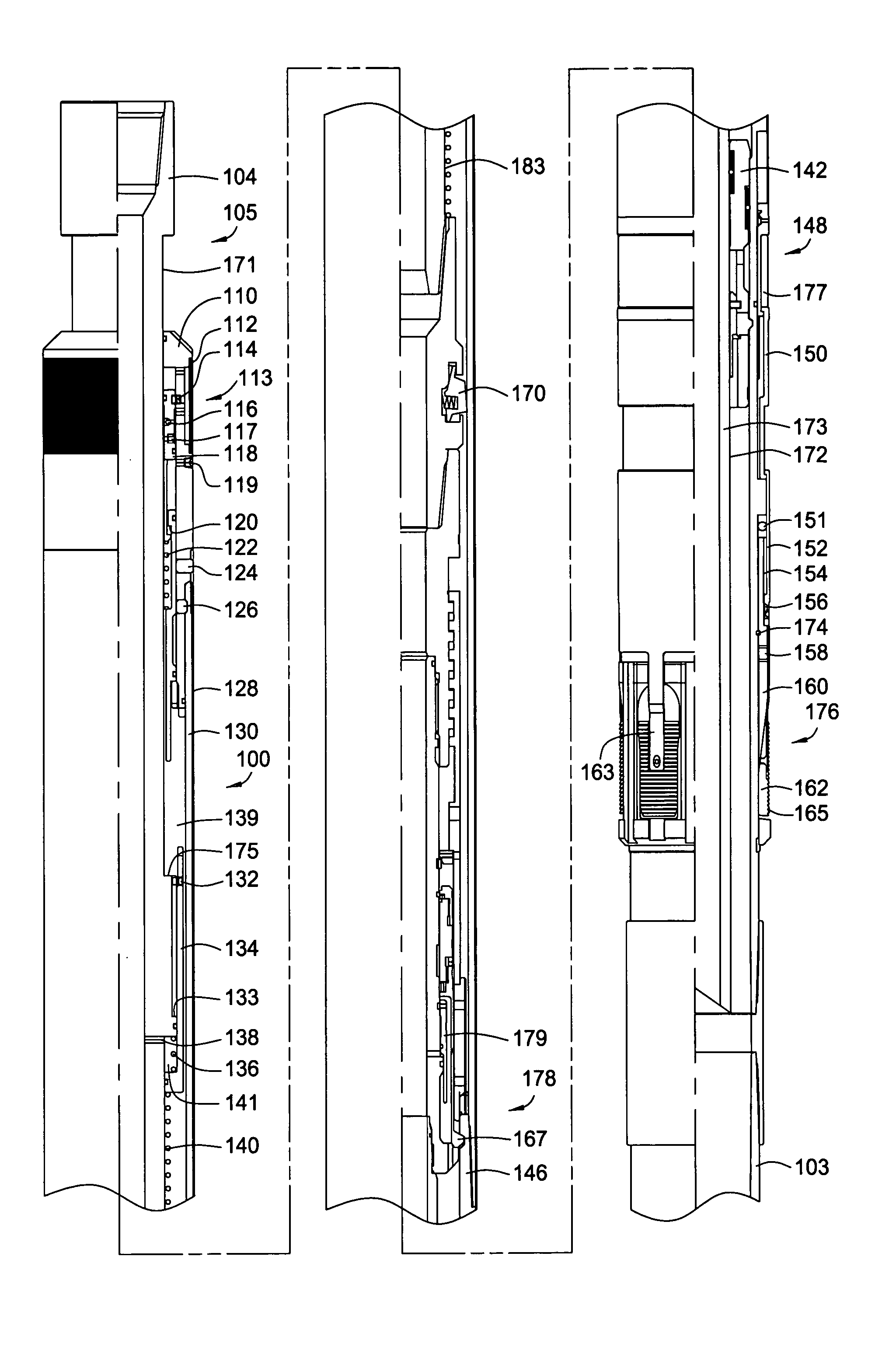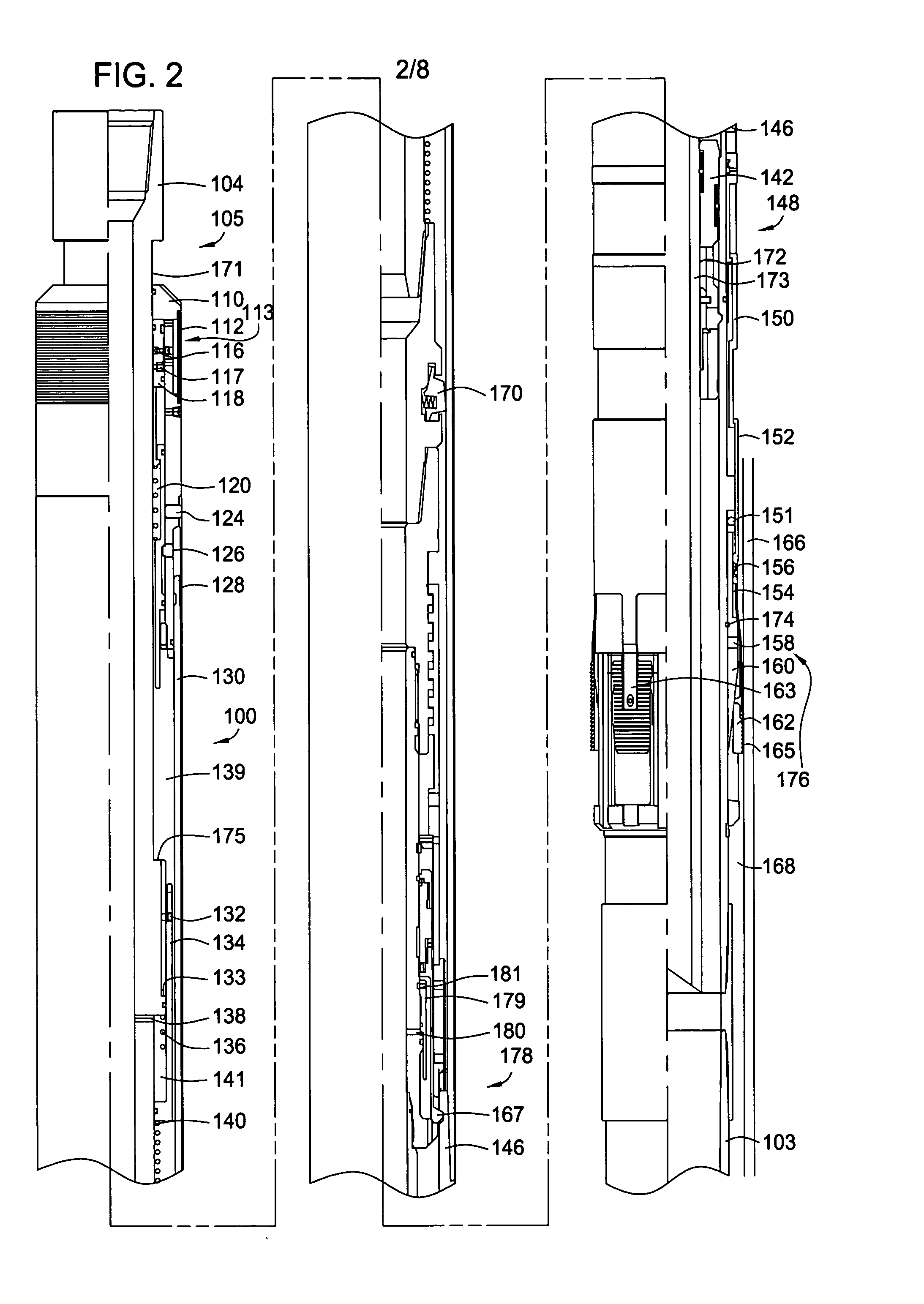Hydraulic setting tool for liner hanger
a technology of hydraulic actuation and liner hanger, which is applied in the direction of fluid removal, earthwork drilling and mining, and wellbore/well accessories, etc., can solve the problems of causing leakage paths, not providing fluid seal between the liner and the casing, and costly remediation
- Summary
- Abstract
- Description
- Claims
- Application Information
AI Technical Summary
Benefits of technology
Problems solved by technology
Method used
Image
Examples
Embodiment Construction
[0031] Embodiments of the present invention generally relate to methods and apparatus for completing a well. Particularly, embodiments of the present invention relate to a thin outer sleeve disposed around a liner hanger assembly and to a plurality of hydraulic tools in combination with the thin outer sleeve used to set a liner hanger and a liner top packer.
[0032] Embodiments of the invention are described below with terms designating orientation in reference to a vertical wellbore. These terms designating orientation should not be deemed to limit the scope of the invention. Embodiments of the invention may also be used in a non-vertical wellbore, such as a horizontal wellbore.
[0033]FIG. 1 illustrates a partial schematic view of one embodiment of a liner hanger assembly 100 and a running tool assembly 105 in a run-in position. FIG. 2 shows a partial schematic view of the liner hanger assembly 100 and the running tool assembly 105 with the liner hanger 176 set within a wellbore. FI...
PUM
 Login to View More
Login to View More Abstract
Description
Claims
Application Information
 Login to View More
Login to View More - R&D
- Intellectual Property
- Life Sciences
- Materials
- Tech Scout
- Unparalleled Data Quality
- Higher Quality Content
- 60% Fewer Hallucinations
Browse by: Latest US Patents, China's latest patents, Technical Efficacy Thesaurus, Application Domain, Technology Topic, Popular Technical Reports.
© 2025 PatSnap. All rights reserved.Legal|Privacy policy|Modern Slavery Act Transparency Statement|Sitemap|About US| Contact US: help@patsnap.com



